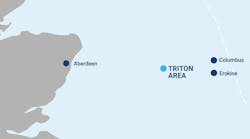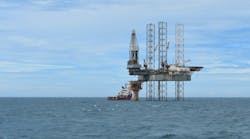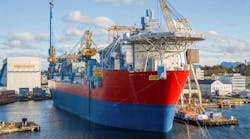Offshore staff
CANTERBURY, UK –Floating liquefaction capex growth will exceed that for regasification from 2013 to 2019, predicts Douglas-Westwood. Of the forecast total spend of $47.4 billion, more than $28 billion will be for FLNG liquefaction and $19.1 billion will be for import terminals.
Of this total, 35% of the spending will be for both liquefaction and regasification terminals in Asia. Australia will account for 22% of the market, and Latin America will reach 17%, says the forecast.
While long-term demand increases the value of gas reserves, lack of infrastructure to deliver that gas makes monetization challenging. Offshore FLNG installations can help mitigate some of the risks in bringing gas to market.
“Furthermore, developing new onshore infrastructure can also be difficult due to local opposition (the ‘Not In My Back Yard’ or NIMBY effect),” says Murray Dormer, report author.
“The use of offshore regasification facilities, placed in relative proximity to existing gas markets, connected to shore by pipeline, is one method to alleviate such concerns.”
The cost of onshore terminals has reached $1.500 tpa, he says, enhancing the prospects for FLNG operations.
“With the possible exception of China, it is difficult to see how the US unconventional gas development could be replicated elsewhere in the world within the next 10 years, notes Steve Robertson, Douglas-Westwood director.
“We are seeing the emergence of vast offshore conventional gas resources, which will offer a more predictable long-term source of supply.
“In excess of 100 tcf has been discovered in Mozambique and Tanzania alone – equivalent volumes to the world’s current annual natural gas consumption. Whilst the conventional reserves in place are vast, development will be technically complex as the finds are in water depths ranging from 800 m (2,624 ft) to over 2,000 m (6,560 ft).
“However, with the progression of FLNG projects in Australasia, floating liquefaction is becoming an increasingly viable option for the production and export of natural gas in East Africa. It is also important to note that theoretically, FLNG would be the most economical strategy with a lower cost per tpa.”
11/15/2012




